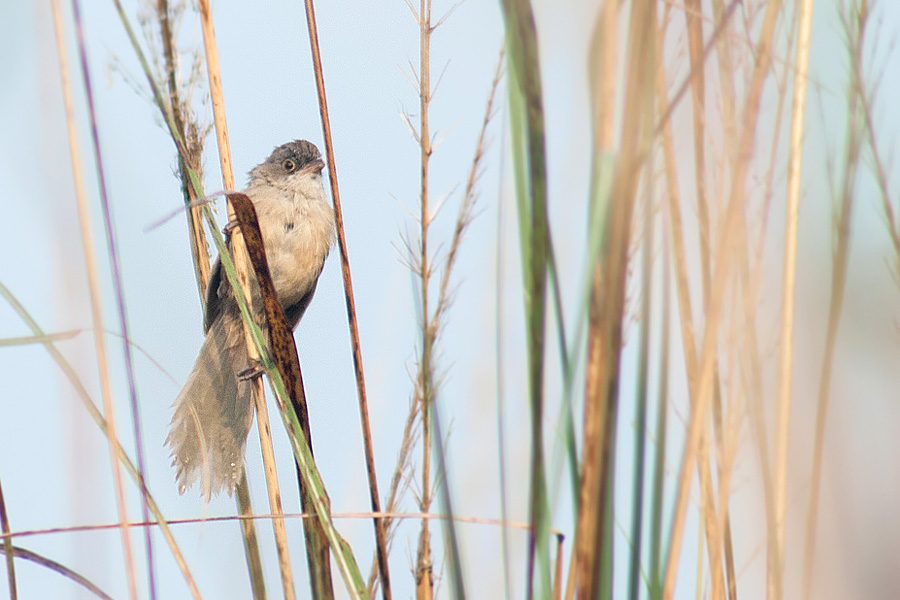
While birding in Harike Wildlife Sanctuary in Punjab on October 31st and November 1st, 2012, we (three birders — Gunjan Arora, Shashank Dalvi and Saurabh Sawant) came across the Sind Jerdon’s Babbler (Chrysomma altirostre scindicum). This is the first record of this subspecies from India. This record is 370 kms away from the nearest known locality of this bird. It was earlier known only along the main Indus River from very few localities in Pakistan. We found the birds being locally common on the islands of this wetland system formed by confluence of Sutlej and Beas rivers.
The songs of these individuals (scindicum) were very similar to the subspecies from north-east India (griseigularis) though these birds were much paler.
This species is classified by the IUCN as Vulnerable (V) due to loss of habitat in most of its range. It is feared that the population of this species has declined by 30% driven by loss of habitat due to damming of wetlands for agriculture and flood control.
We believe this is a significant finding considering the status of this bird:
- It is feared that Myanmar Jerdon’s Babbler is already extinct
- The north-east subspecies is facing massive habitat loss, and
- The Sind Jerdon’s Babbler is known from from only four localities in Pakistan
Read more about the Jerdon’s Babbler in the BirdLife International website.

 CI is a non-profit, non-commercial portal that aims to facilitate wildlife and nature conservation by providing reliable information and the tools needed to campaign effectively.
CI is a non-profit, non-commercial portal that aims to facilitate wildlife and nature conservation by providing reliable information and the tools needed to campaign effectively.
Chosen as 'Picture of the Week'
We believe this is a significant finding considering the status of this species is classified as Vulnerable (V) by the IUCN. It is feared that the population of this species has declined by 30% driven by damming of wetlands for agriculture and flood control.